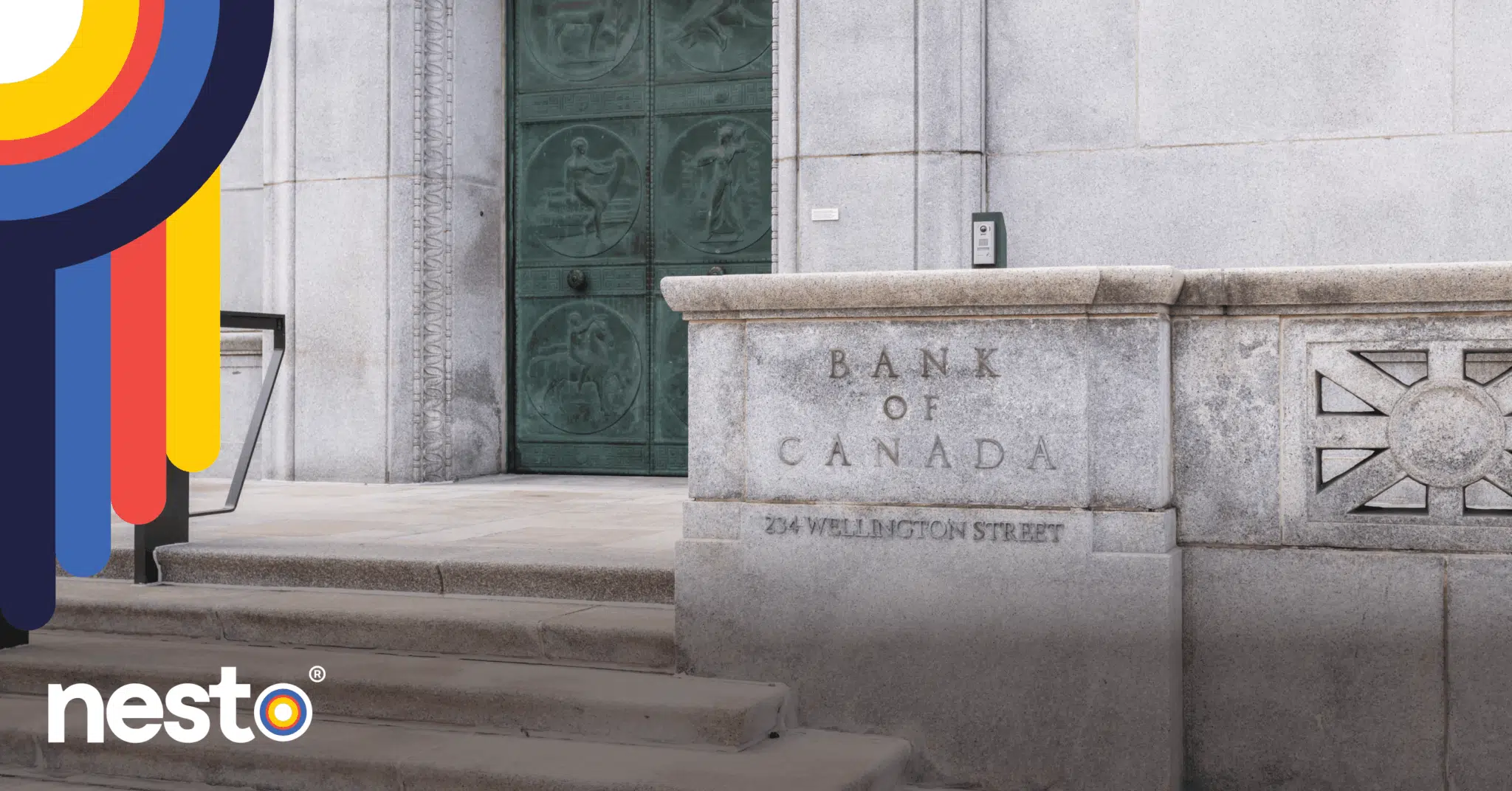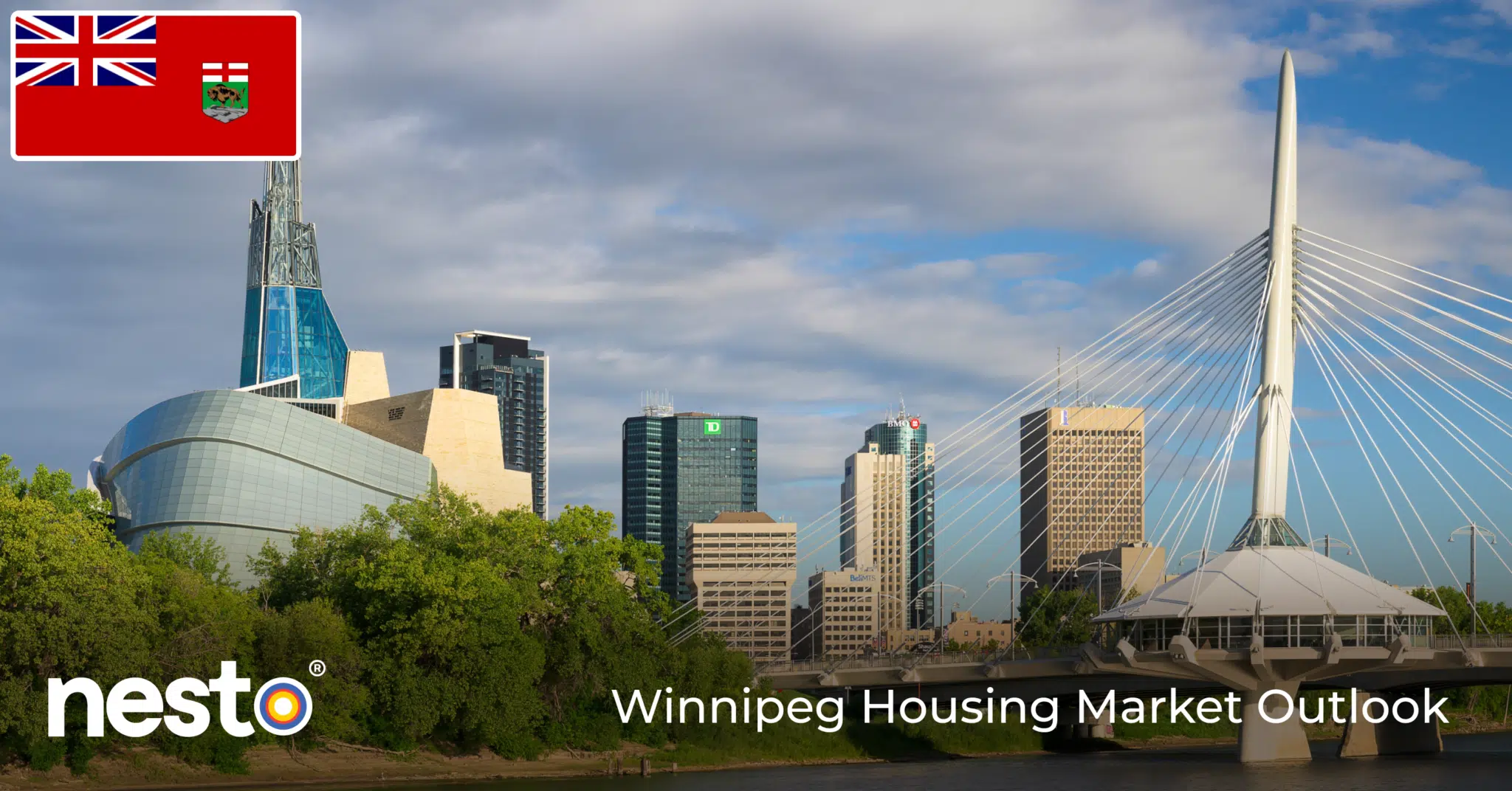Bank of Canada Holds Rates Steady

Bank of Canada Held Policy Rate Steady as Economic Signals Firmed
The Bank of Canada left its policy rate unchanged on December 10, maintaining a cautious stance as stronger-than-expected labour market data, upwardly revised GDP figures, and ongoing tariff-related uncertainty pointed to a more resilient economy than previously assumed. Policymakers noted that recent indicators did not provide the “accumulation of evidence” required to justify another cut after the adjustments made earlier in the fall.

Labour Market Surprised to the Upside With Strong November Gains
The decision followed a November employment report that significantly outperformed expectations. Canada added 53,600 jobs, marking a third consecutive month of notable gains and pushing the unemployment rate down to 6.5% from 6.9%. This change in unemployment was the most significant one-month decline since early 2022. While most new positions were part-time and concentrated among younger workers, the unemployment rate for core-age Canadians also declined.
Wage growth remained elevated at 4% for permanent workers, reinforcing the view that underlying labour demand was sturdier than many forecasters had assumed heading into the fall. In comparison, the RBC’s Nathan Janzen observed that job vacancies, tracked through external sources such as Indeed, had also begun to recover.
Housing Markets Showed Uneven Momentum Across Canada
Housing data from major markets indicated that buyers re-entered the market selectively as 2025 drew to a close, responding to gradual affordability improvements and shifting rate expectations. Cities such as Vancouver, Montreal, Calgary, Edmonton and Winnipeg recorded month-over-month increases in resales in November, confirming early signs that demand had begun to stabilize after a muted summer. In several cases, home resales exceeded 5% on a seasonally adjusted basis.
However, the picture remained uneven. Toronto and Hamilton continued to see weaker activity, with sales falling short of pre-pandemic norms and home prices drifting lower amid abundant inventory. These differences reflected how regional economies absorbed the effects of tariffs, job-market uncertainty, and slower population growth.Price trends followed supply conditions. Markets with ample listings, such as Vancouver and Toronto, experienced ongoing declines in the MLS Home Price Index. In contrast, regions with tighter supply, such as parts of Quebec and the Prairies, saw moderate price gains. RBC Economics expects this divergence to persist into early 2026, with any national recovery unfolding gradually as labour conditions improve and economic confidence is rebuilt.
How Bank of Canada Rate Changes Affect Your Mortgage Payments
For example, if you have a $500,000 mortgage secured at nesto’s 5-year variable low rate of
| Mortgage Amount | Mortgage Payment | Qualifying Mortgage Payment | 5-Year Term Interest | Gross Annual Income Required |
|---|---|---|---|---|
| $100,000 | $513 | $614 | $16,617 | $25,312 |
| $200,000 | $1,027 | $1,228 | $33,233 | $47,547 |
| $300,000 | $1,540 | $1,842 | $49,850 | $69,782 |
| $400,000 | $2,054 | $2,456 | $66,467 | $92,018 |
| $500,000 | $2,567 | $3,070 | $83,083 | $114,253 |
| $600,000 | $3,080 | $3,685 | $99,700 | $136,488 |
| $700,000 | $3,594 | $4,299 | $116,317 | $158,723 |
| $800,000 | $4,107 | $4,913 | $132,933 | $180,958 |
| $900,000 | $4,620 | $5,527 | $149,550 | $203,193 |
| $1,000,000 | $5,134 | $6,141 | $166,167 | $225,428 |
Common mortgage amounts and corresponding mortgage payments on nesto’s 5-year variable low rate of
December 2024 vs. December 2025: What’s Different?
How Has Housing Affordability Changed in the Past Year? Renting vs. Owning
Today, Canada’s benchmark home price is $664,900, while a year ago, it was $690,500, which has decreased by 3.7%. However, the lowest 5-year variable mortgage rate at nesto has decreased from 5.15% a year ago to
*1 and 2: Values for mortgage payments calculated based on nesto’s variable rate over a 25-year amortization period with a 20% downpayment using the average/benchmark home price in the stated month as reported by CREA for the location.

How Bank of Canada Rate Changes Affect Your Mortgage Payments and Interest Costs*
December 2024
Fixed Rate: 4.19%
Home Price: $690,500
20% Downpayment: $138,100
Mortgage Needed: $552,400
→ $3,671 monthly mortgage payment
→ $123,550 in total interest over 5-year term

December 2025
Fixed Rate:
Home Price: $664,900
20% Downpayment: $132,980
Mortgage Needed: $531,920
→ $3,209 monthly mortgage payment
→ $111,613 in total interest over 5-year term
December 2024
Variable Rate: 5.15%
Home Price: $690,500
20% Downpayment: $138,100
Mortgage Needed: $552,400
→ $3,671 monthly mortgage payment
→ $145,281 in total interest over 5-year term

December 2025
Variable Rate:
Home Price: $664,900
20% Downpayment: $132,980
Mortgage Needed: $531,920
→ $3,072 monthly mortgage payment
→ $99,436 in total interest over 5-year term
*For illustrative purposes only, when comparing against nesto’s 5-year lowest fixed and adjustable insured and insurable mortgage rates, with a 20% downpayment & 25-year amortization, using Canada’s composite average home price data as made available through CREA. Other limiting terms & conditions apply. Rates are subject to change without notice.
Revisions Showed the Economy Entered the Trade Shock on Firmer Footing
New quarterly gross domestic product (GDP) data and sizable revisions further justified the BoC’s pause for Canada’s policy rate. Third-quarter GDP grew at an annualized rate of 2.6%, handily beating expectations. While much of the increase was driven by a sharp swing in imports and exports, revisions to prior years showed that real output had been stronger than initially recorded. Productivity growth, while still subdued, was healthier than earlier estimates suggested.
These revisions implied that economic slack was smaller than the Bank had previously assumed, helping to explain why core inflation had remained sticky near 3% even as headline readings eased.
Household Spending and Investment Showed Mixed Signals
The details beneath the headline GDP reminded policymakers that the economy was not out of the woods. Final domestic demand fell by 0.1% and household consumption slipped by 0.4%. Business investment remained flat, and manufacturing payrolls continued to weaken despite gains captured in household surveys. The Bank noted, however, that earlier cuts had helped ease debt-service strain, and that national balance sheet data showed household finances remained broadly stable.
Population growth slowed markedly in the second half of the year due to immigration curbs, which contributed to the drop in the unemployment rate and reduced pressure on the labour supply. “A significant cool-down in population growth, and thus the labour force, is a major factor behind the reduced pressure on the jobless rate.” BMO’s Doug Porter noted. He also added that the combination of consecutive job gains and the sudden pullback in the unemployment rate meaningfully reduced the odds of additional cuts in 2026.
Markets Abruptly Repriced the Interest Rate Outlook
Financial markets reacted strongly to the November jobs report. Government of Canada bond yields rose sharply immediately following the release, with the 5-year yield jumping more than 20 basis points. The Canadian dollar strengthened against the United States dollar, and swaps markets priced out further easing, assigning rising odds to a rate hike by late 2026.
The outsized reaction in bond yields reflected the kind of volatility often seen near rate-cycle turning points. With the 2-year yield now sitting well above the overnight rate, markets signalled that a meaningful improvement in borrowing costs was less likely without a material shock. For borrowers, the message was clear: fixed-rate stability may offer more predictable value in an environment where expectations can swing sharply, especially for those borrowers relying on strong mortgage portability or blend-and-extend features to manage future uncertainty.
The Bank acknowledged these moves but reiterated that policy decisions would continue to be guided by inflation dynamics and the broader economic outlook, including the trajectory of US tariffs and their impact on Canadian exports.
Mortgage and Rate Guidance for Borrowers as Expectations Shifted
The sharp repricing in bond markets altered the near-term outlook for mortgage rate forecasts. The jump in 5-year Government of Canada bond yields placed upward pressure on mortgage lenders’ pricing for fixed mortgage rates, which remained sensitive to global bond market movements. With traders assigning a higher probability to rate increases than to further cuts, the likelihood of revisiting the prime rate lows (from 2021) had diminished.
For borrowers weighing fixed versus variable rate options, the implications were straightforward. With most cuts behind us and a stable policy path anticipated, variable (VRM) and adjustable (ARM) mortgages offered less of a near-term advantage.
Even under optimistic rate-cut assumptions, the potential savings on an average mortgage amounted to less than $1,000 in borrowing costs over the full 5-year term, and only if mortgage rates moved exactly as markets predicted. Fixed rates, while not at cyclical lows, provide insurance against the possibility that the next meaningful policy move would be upward rather than downward.
For home buyers, the environment requires careful timing and planning. Falling prices in markets such as Toronto and Vancouver improved entry-level mortgage affordability. Still, higher carrying costs, lower debt service ratios, and uncertainty over tariffs encouraged more deliberate decision-making.
Renewers facing elevated mortgage payments may not benefit from additional policy relief, reinforcing the importance of early renewal planning and risk management. Refinance activity remained steady, with many households securing their best mortgage rates before potential further increases in fixed-rate mortgage pricing.
Across borrower groups, the Bank’s decision signalled a period of stability rather than imminent relief. With inflation running above target, the risk of cuts reappearing quickly was low, and most borrowers are best suited to focusing on budgeting and longer-term planning rather than short-term rate speculation.
Inflation Pressures Remained Above Target
Core consumer price inflation (CPI) continued to track above the central bank’s 2% target, and policymakers highlighted the risk that stronger-than-expected consumer and government spending could keep underlying inflationary price pressures sticky. With revisions suggesting the output gap was narrower than previously believed, the Bank assessed its current stance as appropriate for gradually guiding inflation back toward target.
Outlook and Risks Remain Highly Dependent on Trade and Inflation
The Bank indicated that it expected economic growth to remain soft in the near term, following October’s flash GDP reading, which showed a 0.3% decline. Tariff-exposed sectors, especially manufacturing, were still adjusting, and business confidence remained fragile. Progress on renewing CUSMA was identified as a key risk shaping medium-term expectations.
However, the Bank also noted that the labour market had largely absorbed the initial tariff shock and that the broader recovery in job vacancies supported a more stable outlook heading into next year.
Today’s Policy Stance Reflects Stability in the Rate Cycle, Not Finality
By leaving the policy rate unchanged, the Bank reinforced its message that monetary policy had reached a level consistent with gradually restoring price stability, even as the economy navigated the crosscurrents of tariffs, slower population growth and uneven regional performance. Recent labour and GDP data suggested greater underlying momentum than previously understood, leaving little justification for additional easing without an apparent deterioration in demand or a sustained decline in core inflation.
At the same time, policymakers emphasized that the path forward would depend heavily on evolving inflation dynamics and external risks, particularly the status of CUSMA and ongoing trade negotiations. The Bank acknowledged that some segments of the economy, including highly rate-sensitive households and regions exposed to manufacturing volatility, continued to experience pressure. Nonetheless, the broader macroeconomic environment showed signs of stabilization, with job vacancies recovering and some housing markets regaining momentum.
Looking forward, the Bank signalled that patience remained appropriate. Monetary policy would provide a steady foundation while the cumulative effects of previous adjustments continued to work through the economy. The Governing Council reiterated that future policy adjustments would require a clear shift in inflation or growth conditions.
Markets were already signalling that the overnight rate was near the bottom of this cycle, with Government of Canada bond yields suggesting that fixed mortgage rates were unlikely to revisit prior lows. Unless tariffs materially weaken growth, the probability of a sudden rate plunge remained limited.
Overall, the Bank’s decision pointed to a pause in the easing cycle rather than a formal endpoint. The coming months will hinge on whether inflation resumes its descent toward 2% or stalls near 3%. For borrowers, patience remains essential as the full effects of prior rate moves ripple through the economy. The environment ahead rewarded thoughtful planning, disciplined term selection and realistic expectations rather than attempts to anticipate a dramatic rate reversal.
Need clarity on how the Bank’s decision affects your best mortgage rate, or your renewal or refinance strategy? Contact nesto mortgage experts today for a personalized plan tailored to today’s rate environment.
Why Choose nesto
At nesto, our commission-free mortgage experts, certified in multiple provinces, provide exceptional advice and service that exceeds industry standards. Our mortgage experts are salaried employees who provide impartial guidance on mortgage options tailored to your needs and are evaluated based on client satisfaction and the quality of their advice. nesto aims to transform the mortgage industry by providing honest advice and competitive rates through a 100% digital, transparent, and seamless process.
nesto is on a mission to offer a positive, empowering and transparent property financing experience – simplified from start to finish.
Contact our licensed and knowledgeable mortgage experts to find your best mortgage rate in Canada.




